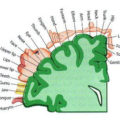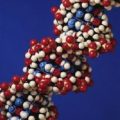
It’s common knowledge that males take the obvious sexual selection route, using bright plumage, energetic mating dances or fancy sports cars to lure mates. But it seems as though females may have adopted a much more sneaky strategy for choosing who they want to breed with. In the Journal of Proteome Research, scientists report possible biochemical proof that the reproductive system of female mammals can “sense” the presence of sperm and react to it by changing the uterine environment. The researchers speculate that this may be the mechanism behind post-copulatory sexual selection, where females that have mated with several partners can then determine which sperm fertilizes their egg.
Lead researcher Alireza Fazeli, from University of Sheffield, says that this post-coital “ladies’ choice” has profound implications for in-vitro fertilization (IVF), cloning, and animal breeding. It is also a windfall for evolutionary biology, providing a possible explanation for female promiscuity in the animal kingdom, he adds.
Until now, it was believed that competition for the egg was male-oriented, with sperm themselves deciding which fertilizes the egg by being the faster swimmer. With post-copulatory sexual selection, the female is in control, her oviducts selecting the “winner”- the best quality sperm from the healthiest male – and rejecting the rest. Fazeli’s new study documents the first chemical evidence of such a sperm recognition system in the oviducts of pigs – animals whose reproductive systems are similar to humans.
“We know sperm selection exists in nature, especially in promiscuous species, when females mate with several males,” Fazeli said. “Baboons are a good example. During one reproductive cycle, if the female mates with several males, most of the time the offspring belong to one of the males – not a spread between all of them. We are now seeing what can be the molecular basis for this effect.”
While sperm interaction with oviduct cells has been studied in laboratory cultures, the new research is the first to provide evidence for this poorly-understood process in living animals. Using minimally invasive techniques, the researchers compared protein changes in the oviductal fluids before and after sperm introduction to the reproductive tract.
The results show that the mammalian female reproductive tract is a far more tightly regulated environment than once thought – a fact that Fazeli says is “nearly completely ignored by modern IVF.” He believes the new findings have profound implications for the massive IVF industry as well as cloning. Both techniques rely on egg fertilization outside of their finely-tuned reproductive environment.
“The female reproductive tract is a very highly organized and regulated system,” Fazeli explained. “With IVF, the embryo can develop into an adult, but the question remains: ‘Are we doing the fine-tuning right’? We are not sure if what we are doing, based on differences between in-vitro and in-vivo fertilization, is creating health problems for these babies.”
Interestingly, Fazeli’s work relates to understanding the mechanisms involved in determination of self and non-self by the immune system. Since sperm are a foreign entity in the female reproductive tract, the immune system should attack and destroy them. In reality, however, sperm are protected and stored. The traditional explanation is that sperm somehow evade the immune response. Fazeli says his data shows that this is not true. He found that the female immune system instead recognizes sperm as a friend, not a foe. Fazeli suggests that the female reproductive tract is equipped with sensory systems that recognize sperm and alert the ancient, non-specific “innate” immune system to dampen its reaction towards them.
“The main message from this work is that the female reproductive tract has a lot more control than previously thought,” says Fazeli. “This discovery profoundly influences our understanding of the physiology of events leading to conception.”
Related articles:
Females Get Into Sexual Selection Game
Researchers Investigate Giant Sperm Paradox
Sexual Success And The Schizoid Factor
Balls vs Brains In Batty Battle For Evolutionary Success
St Valentine’s Day Sperm Massacre









Comments are closed.